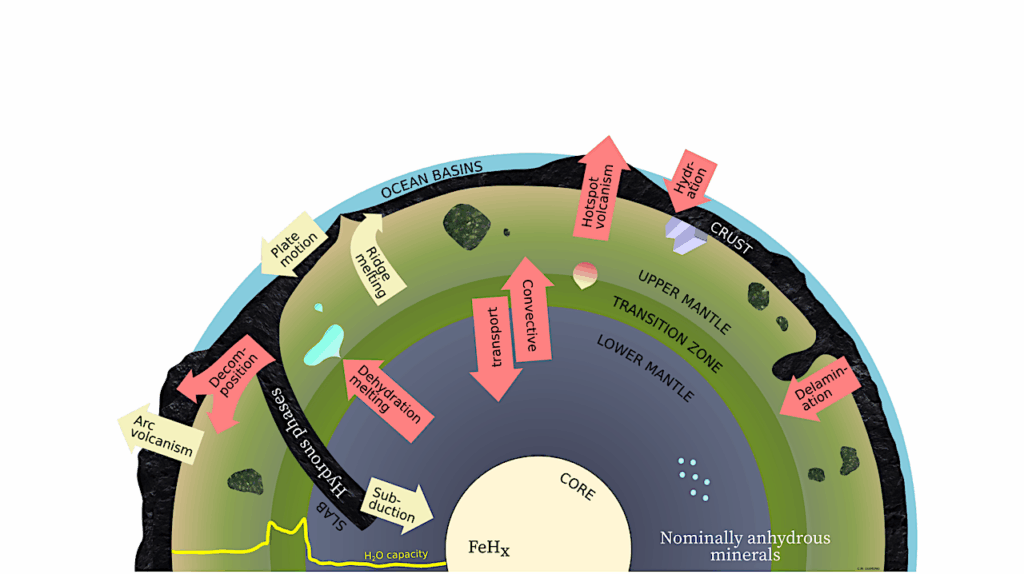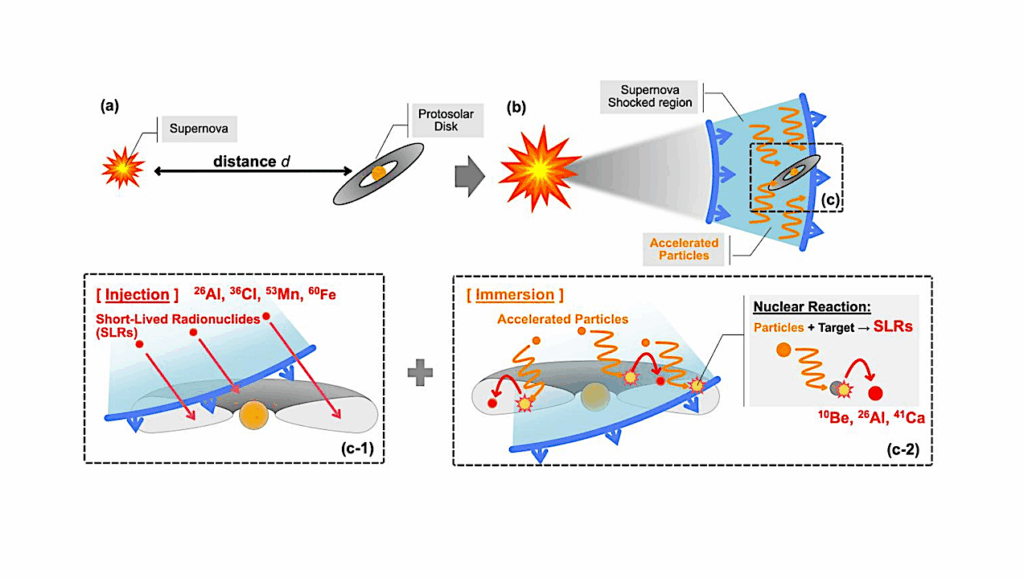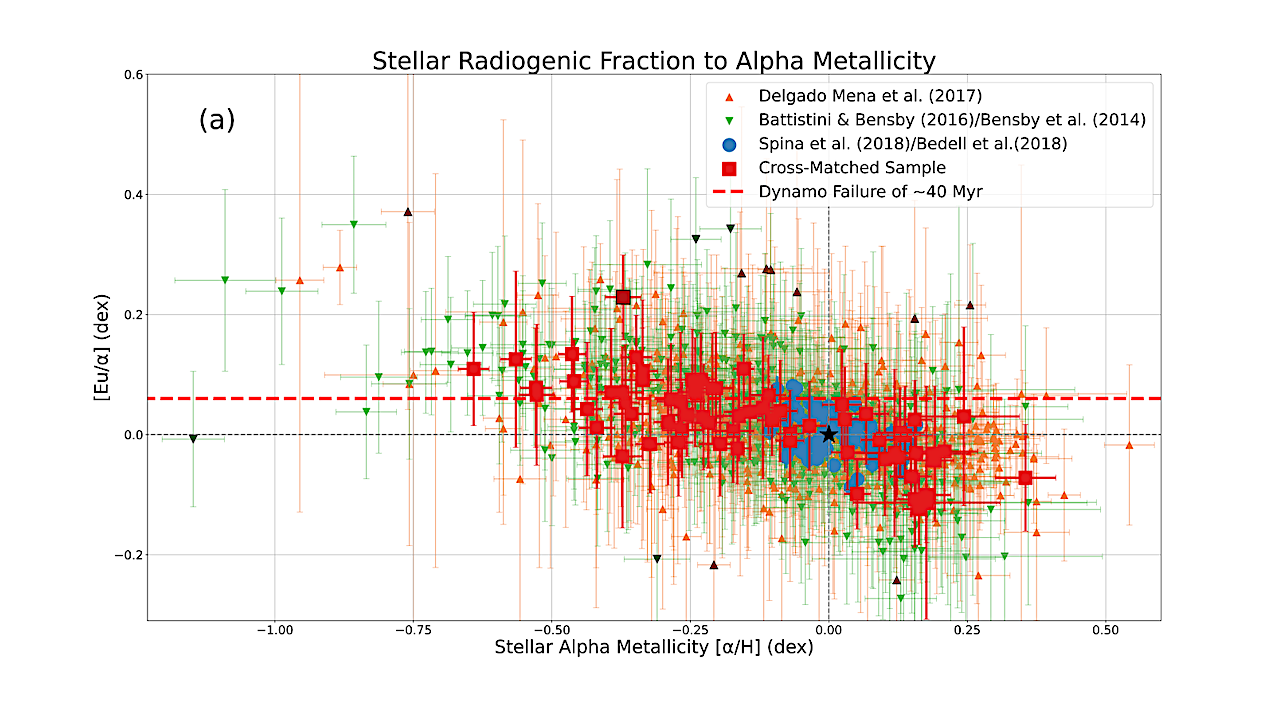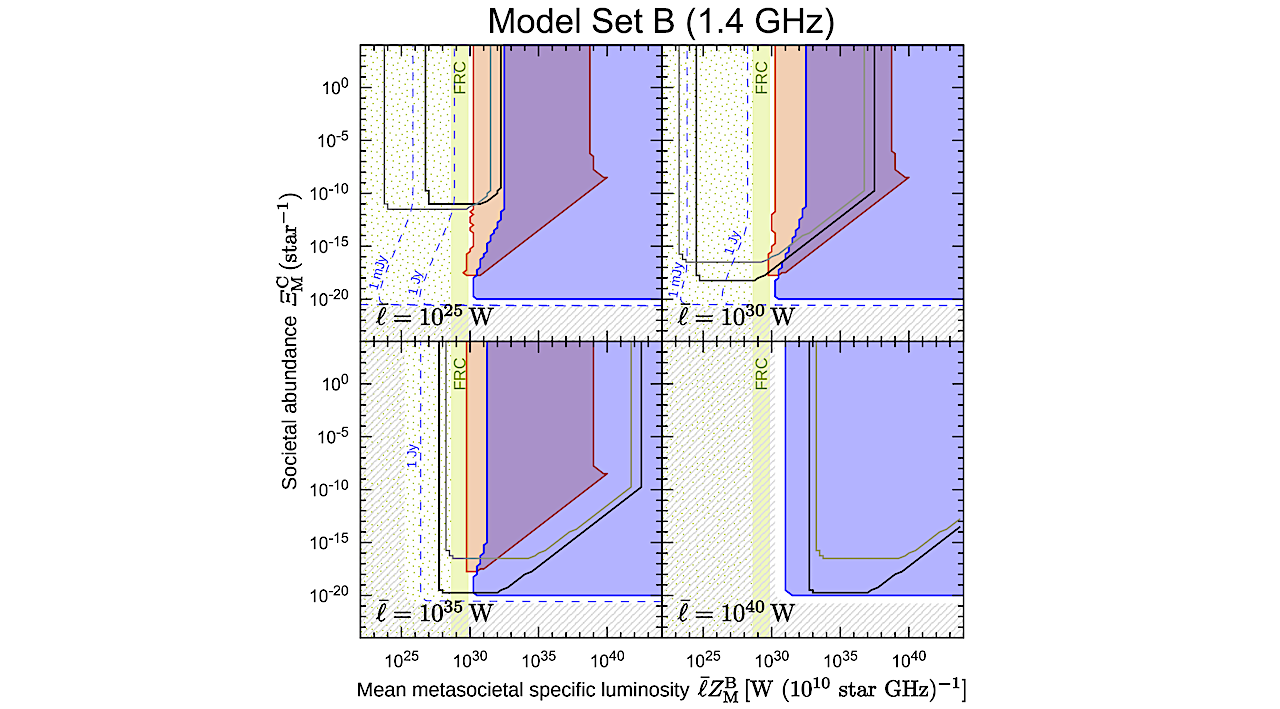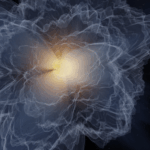Now Reading: Exoplanets Beyond The Conservative Habitable Zone: II. Occurrence
-
01
Exoplanets Beyond The Conservative Habitable Zone: II. Occurrence
Exoplanets Beyond The Conservative Habitable Zone: II. Occurrence
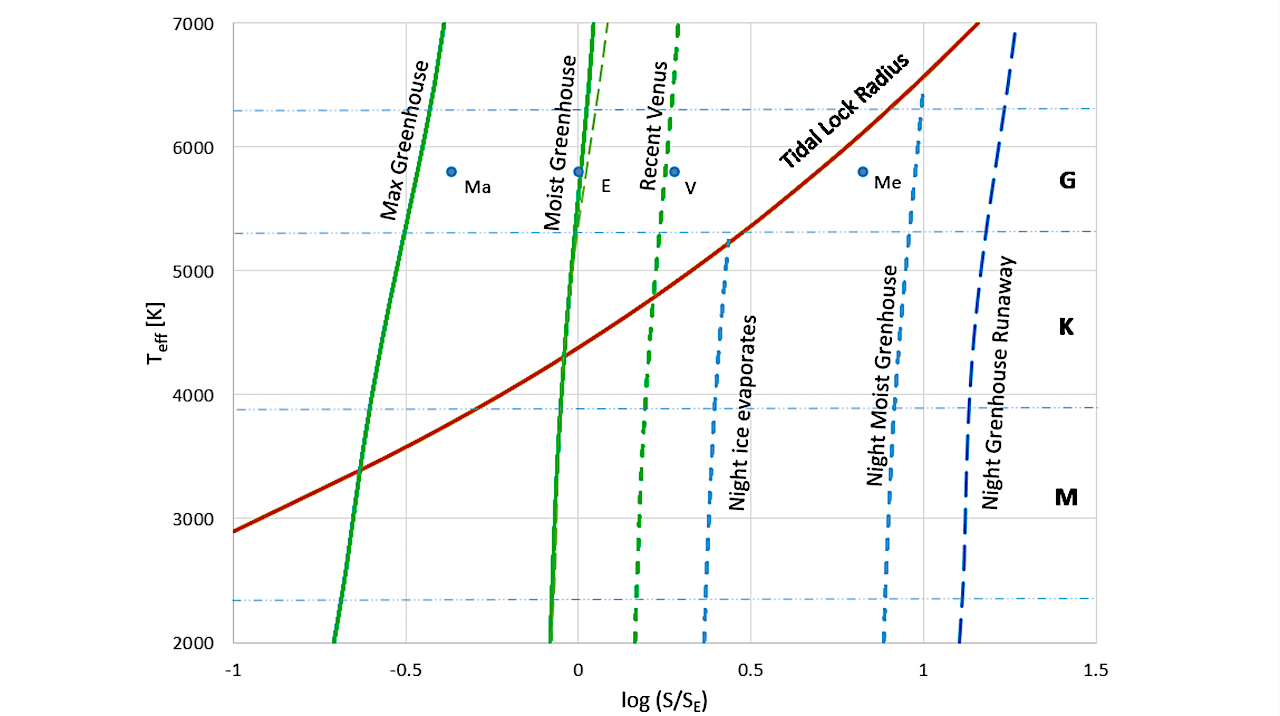

Boundaries of the Habitable Zone. The horizontal axis marks the radiative flux relative to Earth and the vertical ones, the effective temperature and approximate spectral type of the host star (spectral type boundaries are marked by horizontal thin dashed lines). Solid green curves indicate the conservative HZ boundaries for rapidly rotating planets. Also shown is the Recent Venus inner HZ boundary (green dashed) and the Greenhouse Runaway one (light green dashed curve). The blue dashed curves represent the inner extended HZ boundary for locked planets (Wandel 2025). A global heat transport of 30% (f=0.3) and albedo of 0.3 are assumed. The curve marked “Night ice evaporation” is the moist greenhouse curve shifted to the right by a factor of 1/0.3=3.3. The curves marked “Night Moist Greenhouse” and “Night Greenhouse runaway” are the moist and runaway greenhouse curves for f=0.3 (Wandel 2025). The red curve marks the tidal locking radius (Wandel 2023b) and blue dots denote Solar System planets. — astro-ph.EP
We demonstrate that the extension of the Habitable Zone (HZ) due to the presence of liquid water on the night side of tidally locked planets, modelled in this and earlier works, significantly increases the number of potentially habitable planets.
We calculate the occurrence of habitable planets orbiting M-, K-, and G-dwarf stars within the conservative and extended HZ, beyond the inner and outer boundaries of the conservative HZ.
Integrating over the phase space in the HZ diagram and normalizing our calculation to relatively recent analyses of the Kepler data, we show that potentially habitable planets may be as much as 50 times more abundant than in the lower estimate, limited to the conservative HZ of G-type stars only.
For an intermediate heat transport rate on tidally locked planets, we find that the extended HZ could imply more than one habitable planet per star, and hundreds of habitable planets within 10 pc from Earth.
Amri Wandel
Comments: 11 pages, 2 figures. To be published in the Astrophysical Journal
Subjects: Earth and Planetary Astrophysics (astro-ph.EP)
Cite as: arXiv:2510.00782 [astro-ph.EP] (or arXiv:2510.00782v1 [astro-ph.EP] for this version)
https://doi.org/10.48550/arXiv.2510.00782
Focus to learn more
Submission history
From: Amri Wandel
[v1] Wed, 1 Oct 2025 11:26:17 UTC (1,229 KB)
https://arxiv.org/abs/2510.00782
Astrobiology,
Stay Informed With the Latest & Most Important News
-
 012024 in Review: Highlights from NASA in Silicon Valley
012024 in Review: Highlights from NASA in Silicon Valley -
 02Panasonic Leica Summilux DG 15mm f/1.7 ASPH review
02Panasonic Leica Summilux DG 15mm f/1.7 ASPH review -
 03From Polymerization-Enabled Folding and Assembly to Chemical Evolution: Key Processes for Emergence of Functional Polymers in the Origin of Life
03From Polymerization-Enabled Folding and Assembly to Chemical Evolution: Key Processes for Emergence of Functional Polymers in the Origin of Life -
 04How New NASA, India Earth Satellite NISAR Will See Earth
04How New NASA, India Earth Satellite NISAR Will See Earth -
 05And Thus Begins A New Year For Life On Earth
05And Thus Begins A New Year For Life On Earth -
 06Astronomy Activation Ambassadors: A New Era
06Astronomy Activation Ambassadors: A New Era -
07SpaceX launch surge helps set new global launch record in 2024













